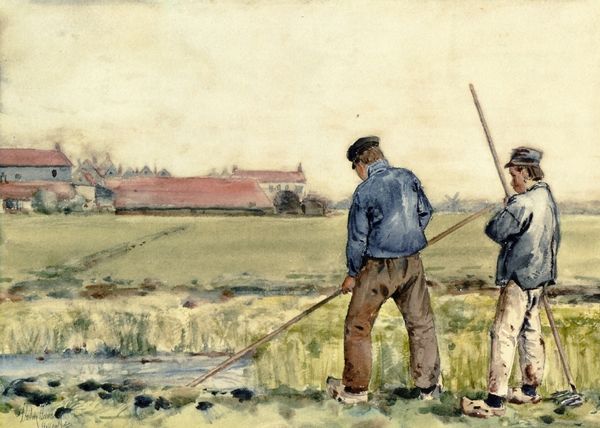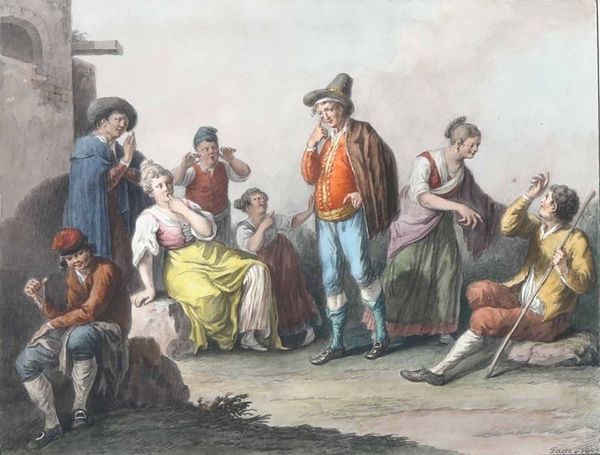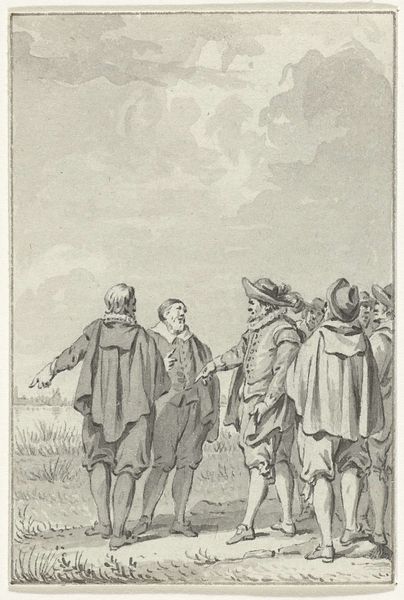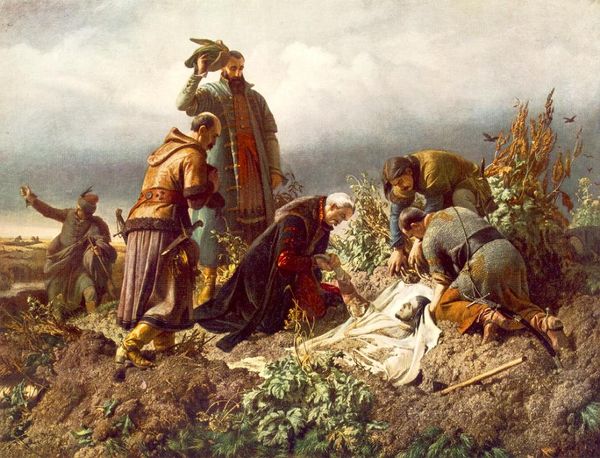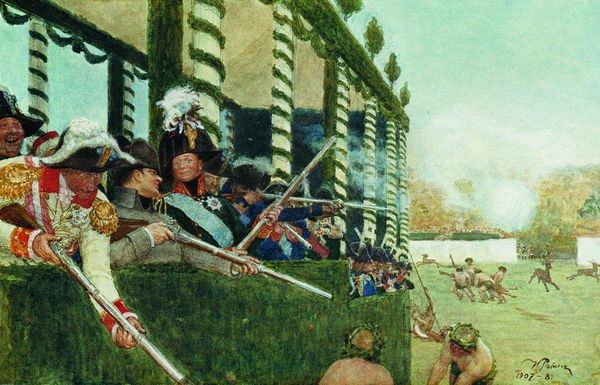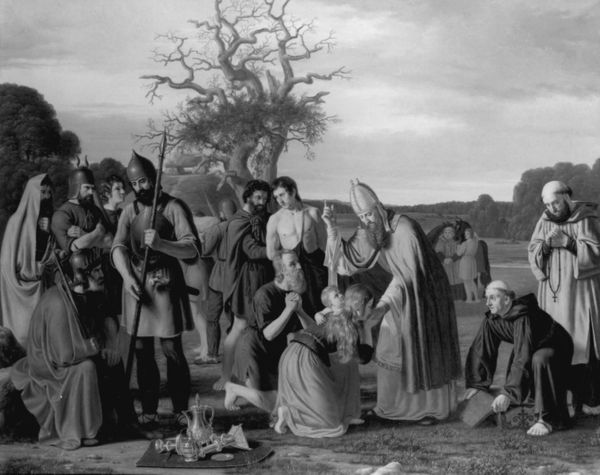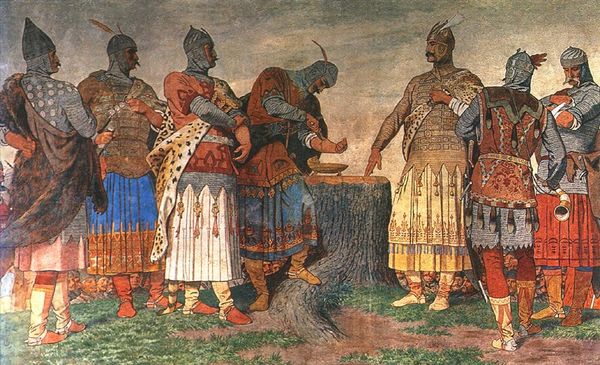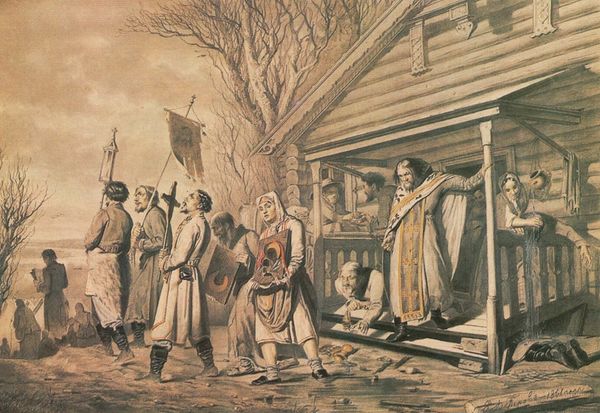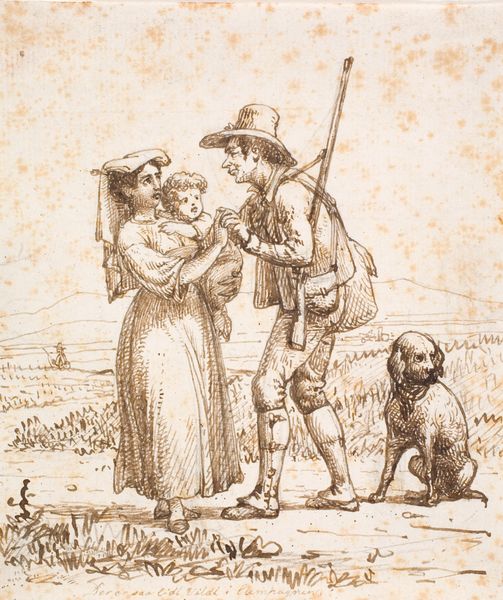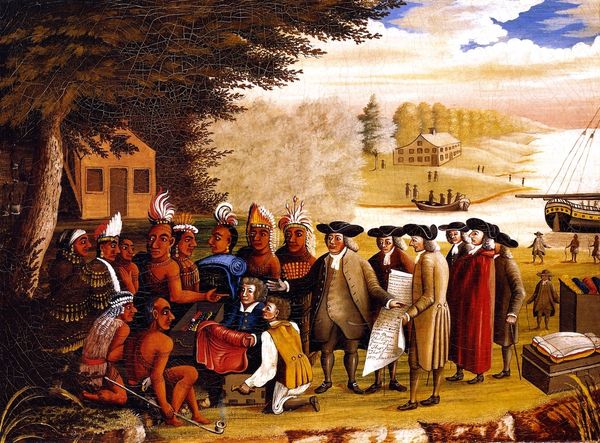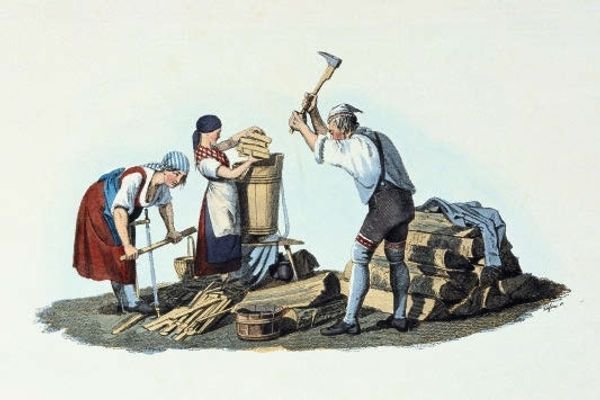
painting, oil-paint
#
narrative-art
#
painting
#
oil-paint
#
figuration
#
oil painting
#
history-painting
Copyright: Public domain
Curator: Alright, let’s take a look at Francis Davis Millet's "Buying Land from the Indians," painted in 1909 using oil paint. My immediate impression is a rather somber one, despite the seemingly neutral title. Editor: Somber indeed. It’s a horizontal slice of…awkwardness? I mean, the scene is set in this vast, pale landscape, almost bleached of color, and then you have these figures frozen in this loaded transaction. It’s like a tableau vivant, staged to within an inch of its life, and there is something immediately tragic and violent just below the surface of such stoic stillness. Curator: I think your read on that stoicism is astute. The figures, though rendered realistically, almost lack dynamism. They seem placed, like symbolic stand-ins, rather than individuals engaged in a fluid interaction. It hints at the underlying tensions that are being so carefully suppressed in the act of treaty-making. Editor: Suppressed, precisely! That tent behind them, slightly off kilter as if leaning in—and yet those mountain peaks are serene in the distance? A symbol of a receding world juxtaposed against...what, ‘manifest destiny’? Also, that piece of paper almost dead-center that they both have hands in is like a dagger cutting across the painting and each person’s space and humanity. Curator: Yes, and it brings into sharp focus the asymmetry of power inherent in this situation. Consider how Millet is presenting this pivotal encounter; this act of 'buying', it becomes the legal formalization of a seizure. Notice also the limited palette; these ochre tones and muted greens evoke a sense of dryness, perhaps alluding to the barren consequences of such exchanges for the indigenous people. Editor: It's clever the way he uses color to emphasize power dynamic in a quiet but deliberate manner! Like the Indian’s dark face, which is hooded as he stoops to put a quill on the dotted line or that striking flash of bright orange garment over his arm...And all of those neutral grays that the other party is dressed in just reinforces the difference in vibrancy and what’s about to be robbed, figuratively! Even the shapes in his garment form a cone, as if to funnel it! What a bummer… Curator: It underscores a very clear imbalance. As an artwork reflecting back on this specific moment in the past, its message speaks volumes about historical narratives and whose voice gets amplified in their telling and portrayal. Editor: Absolutely. The muted palette isn’t just aesthetic; it feels like a muting of historical complexity and genuine feeling in exchange for a version of things sanitized enough for a victor to consume in their home—how unfortunate indeed, I tell you. Curator: Ultimately, “Buying Land from the Indians" stands as a poignant example of how art can reflect not just what happened but what’s lost in the official records and conventional cultural representations of those past transactions. Editor: I’ll say… it kind of hits the spot when things feel so incredibly unbalanced in today’s version of ‘history’ too! Time to re-do this piece, perhaps!
Comments
No comments
Be the first to comment and join the conversation on the ultimate creative platform.

